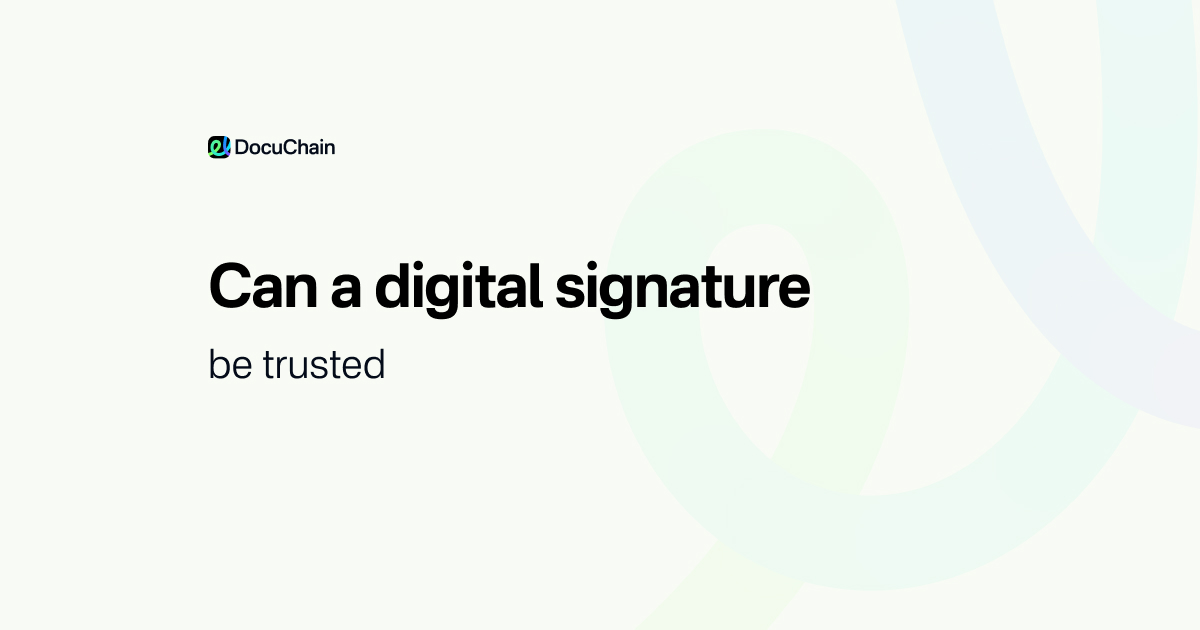
Can a digital signature be trusted?

Real doubts, real concerns
Someone sends you a PDF and says, “Just sign it digitally.” But what does that even mean? Is it safe? Can you prove it later?
These are valid concerns. Many professionals still avoid eSignatures simply because they don’t fully understand how they work.

Cryptographic integrity
There’s a big difference between typing your name and creating a true digital signature. The real thing generates a unique cryptographic fingerprint of the file — and ties it to your identity.
If the file changes, the signature breaks. That’s digital signature verification — no guessing, no assumptions.
Embedded metadata
Most people don’t realize this, but a visually signed PDF offers no real protection. A real digital signature embeds metadata — timestamp, signer, device info, file version — into the file.
This makes it tamper-evident and legally verifiable under eIDAS (EU) and ESIGN/UETA (US).

Verified by protocol
Systems like DocuChain use bank-level encryption, immutable audit trails, and verified identity protocols. That means you can create a digital signature that holds up in court, across borders, and over time.
Secure by default
DocuChain lets you sign documents online securely — without apps or installs. Your digital signature is stored safely, reused when needed, and every signed file includes full validation data.

Trust isn’t just earned — it’s encoded.
Use digital signatures that prove what happened, not just what was intended.
Create Digital Signature


Tap in area to upload your document
Drop your file or click to upload your document.















